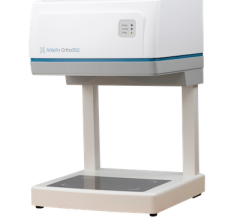
October 24, 2014 — The quality and resolution of X-ray images depends on the characteristics of the focal point, the area that is struck by electrons and from which the resulting X-rays are emitted. A new ASTM International standard will allow users to determine the effective focal spot size of an X-ray source.
The new standard is ASTM E2903, Test Method for Measurement of the Effective Focal Spot Size of Mini and Micro Focus X-ray Tubes. X-ray tube manufacturers will find the standard helpful when supplying customers with focal spot size, or for quality control.
Additionally, “knowledge of focal spot size is very important to practitioners of digital radiography because magnification principles need to be applied to compensate for the limited spatial resolution of digital X-ray image detectors,” said ASTM member David Fry, research and development engineer, Los Alamos National Laboratory.
Fry explains that, in radiography, the blurring of image edges is a function of the geometry of the setup and the focal spot size.
“Digital images are also blurred by the pixel size and X-ray to light conversion screens,” Fry said. “Digital images are thus blurred by combination of focal spot size, geometry and digital detector characteristics.”
Results generated from the use of ASTM E2903 can be used to establish source-to-object and object-to-image detector distances appropriate for maintaining the desired degree of geometric unsharpness or maximum magnification possible, or both, for a given radiographic imaging application. ASTM standard practices E2698 and E2033 for radiographic examination using digital methods require knowledge of focal spot size.
ASTM E2903 was developed by Subcommittee E07.01 on Radiology (X and Gamma) Method, part of ASTM Committee E07 on Nondestructive Testing. E07.01 encourages all interested parties to participate in its standards-developing activities. The subcommittee is particularly interested in feedback on how ASTM E2903 is being applied, as well as additional data for refinement of the standard’s precision and bias statement.
For more information: www.astm.org


 December 03, 2025
December 03, 2025 









